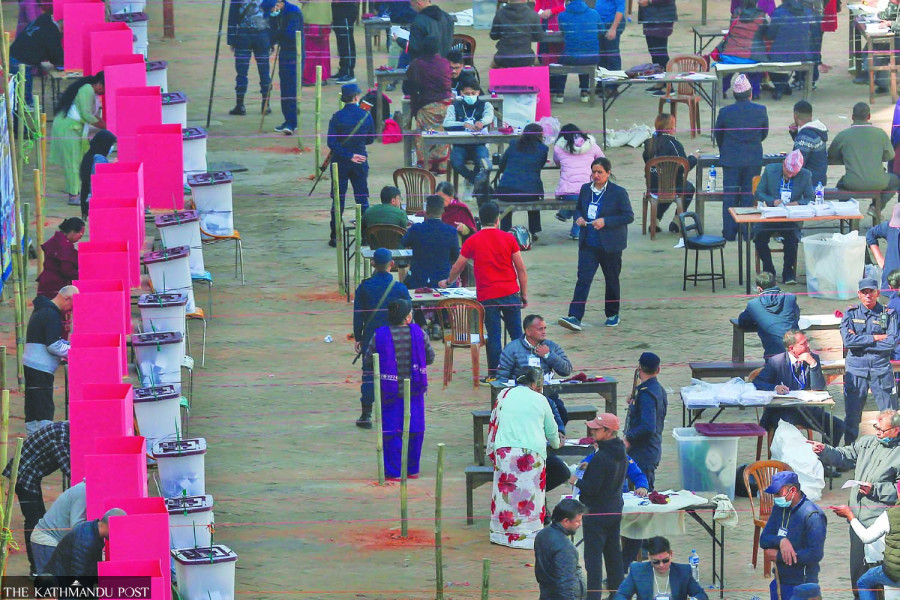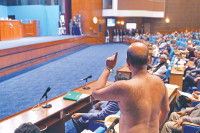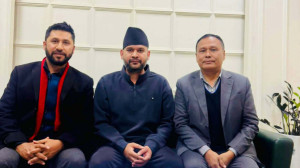Politics
Yearender 2022: A wind of change is blowing
But voters are sceptical whether the new parties and leaders will do anything different because the parties and even some independent candidates have repeatedly tricked the public with their false promises, analysts say.
Nishan Khatiwada
The year 2022 was the year of elections—it witnessed polls for all three tiers of government in two phases. The local elections in May and the federal and provincial elections in November, the second time Nepalis went to vote after the country went federal, contained these in their storylines: low voter turnout, strong emergence of new parties, new generation of voters, and a key message to the traditional parties to correct their course.
Votebank politics has traditionally shaped Nepal’s elections. Affiliation to the same political party for generations, caste and ethnicity, and money and muscle influenced how voters cast their ballots in previous polls. As a result, only the traditional political forces were able to secure victories, from the central to the local levels.
The 2022 elections showed that a wind of change is blowing. Carrying significant messages, the poll results indicate a change in voting patterns across the nation, experts say.
Tula Narayan Shah, a political analyst and Madhesh observer, said Nepalis living abroad also acted like campaigners in the 2022 elections, advising their families back home to vote for this or that person, and greatly influenced the results.
“During the local polls, they urged their family members to vote for independent candidates like Balen and Harka; and in the major polls, they went in favour of the Rastriya Swatantra Party and Janamat Party. Intellectuals also returned from abroad and helped these parties build their electoral strategies,” he said.
According to political commentator Rajendra Maharjan, the local and general polls have sent a message that if the political parties fail to provide good governance, the disenchanted voters will seek new faces.
“Moreover, a new generation voters have hinted that the traditional parties should now connect with issues related to youths to gain their trust.”
Another political analyst Indra Adhikari sees an increasing number of silent voters in the 2022 polls.
“Silent voters waited till the last hour to decide who they wanted to vote for. Some were assessing which candidates were better; and others, opportunism on their minds, were calculating which candidate would serve their vested interests,” she said.
“In many constituencies, the political scenarios changed in the last two-three days prior to the polls because of such voters.”
During May’s local polls, independent candidates had stolen the show. Independent mayoral candidates—Balen Shah and Harka Sampang Rai—were the cynosures after they emerged victorious in Kathmandu and Dharan, respectively. Both had lauro—a walking stick—as their election symbol.
In Dhangadhi too, independent candidate Gopal Hamal was elected mayor.
Around 9 percent of the total candidates ran as independents in May’s local elections. Among them, 385 were elected to office, including seven mayors, two deputy mayors, six rural municipality chairs and two deputy chairs.
Likewise, 136 independent candidates were elected as ward chairs and 117 as ward members.
Their success stories inspired many youths to contest the subsequent federal and provincial elections as independent candidates.
Of the 2,412 candidates who contested the federal polls under the first-past-the-post (FPTP), 867 (or 36 percent) were independents.
They filed independent candidacies either for the first time or as rebel candidates after their parties denied them electoral tickets.
Most of the independents were rebel candidates. Five independent candidates won seats in the House of Representatives.
New political parties also made a strong showing during the general elections. The Rastriya Swatantra Party and Janamat Party very successfully wooed voters away from the smug Nepali Congress, CPN-UML, Maoist Centre and other established parties, winning 20 and six seats respectively in the lower house.
Both earned national party status in the federal Parliament in their first foray into parliamentary politics.
Political commentator Maharjan said a major chunk of the voters remained loyal to the traditional parties as the poll results show.
“Even then, the trend of voting for new parties and new candidates has gone up compared to the previous polls,” he said.
"The number of frustrated voters shot up as they became fed up with the poor service delivery of the traditional political forces," Maharjan said. “New parties took advantage of the situation. And the voters have also elected young faces to the leadership level this time.”
Political analyst Shah asserts that first-time voters in Nepal cast their ballots as they felt like in the 2022 elections, electing youths and new parties.
“Unlike in past elections, the older generation could not influence them as they exercised their franchise,” he said.
According to him, the elections also proved that female voters are asserting their independence.
"In the past, they cast their ballots under the influence of the family’s male head, but now many of them voted independently to choose the representatives they liked, even in the Tarai," he said.
“Dalit voters in Madhesh voted equally independently.”
“The 2022 elections has also signalled that Nepal has transitioned from a voting mode based on trust to a voting mode based on aggression. Large sections of voters adopted the policy of ousting the traditional forces—they voted to throw out the Janata Samajbadi Party and the Loktantrik Samajbadi Party in Madhesh, and the Nepali Congress and the CPN-UML in urban areas,” Shah said.
The 2022 federal and provincial elections saw the lowest voter turnout since 1990 when Nepal adopted a multiparty democratic system.
Under the FPTP category, the voter turnout in the 2022 polls was only 61.41 percent while it was 61.85 percent under proportional representation.
Voter turnout was 61.36 and 61.31 percent respectively under the FPTP and PR category in last month’s provincial polls.
Analyst Adhikari cited the extreme frustration among voters at the ever-fragmenting political parties and constant political instability for the low voter turnout.
“Even when new forces emerged at times, they too went the way of the traditional forces, which added to the frustration and hopelessness among voters,” she said.
Another reason, according to Adhikari, is the electoral alliances which annoyed party loyalists and complicated campaigning.
“Electioneering became very confusing because the candidates in the direct election were from the alliance, and those in proportional representation were from their own parties.”
Though there has been a change in voting patterns, several questions continue to trouble voters, observers say.
“Voters are sceptical whether the new parties and leaders will do anything different and walk the right track because, for a long time, the parties and even some independent candidates have repeatedly tricked the public with their false promises,” Maharjan said.




 15.24°C Kathmandu
15.24°C Kathmandu















